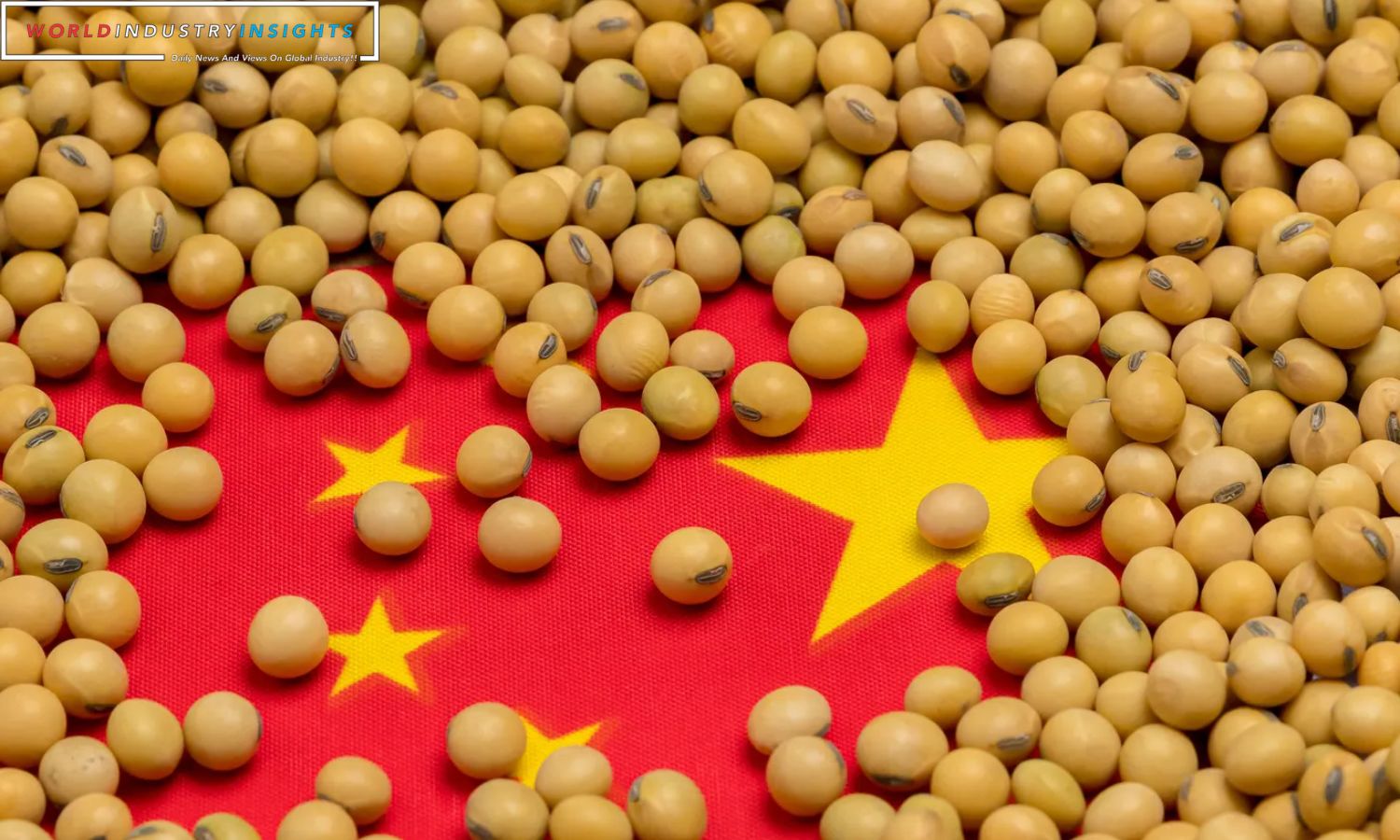China Boosts US Soybean Demand: China’s recent surge in U.S. soybean purchases shines a ray of hope on the American farm export scene. The nation made its most substantial single-day acquisition of U.S. soybeans in over three months, alleviating concerns about sluggish overseas sales of the 2023 harvest.
Chinese importers secured roughly 10 cargoes of soybeans, equivalent to around 600,000 metric tons, to be shipped from Gulf Coast and Pacific Northwest export terminals between December and March. This development is a much-needed relief for U.S. farmers who had watched Brazil maintain a strong grip on the global soybean export market for an extended period this year.
If officially confirmed, Tuesday’s purchases would mark China’s most significant single-day acquisition of soybeans since late July, as per the U.S. Department of Agriculture‘s daily sales data.
Also Read: China Economic Tightrope: Exports Dip, but Imports Surprise in October
These recent soybean import deals are part of a series initiated by Sinograin, China’s state-owned importer, in the past week. Estimates suggest that the total volume of purchases during this period may have reached between 20 to 25 cargoes. Consequently, cash premiums for U.S. soybeans at Gulf Coast terminals experienced a surge of up to 10 cents a bushel on Tuesday as exporters rushed to secure supplies.
High U.S. prices, stemming from barge shipping disruptions and intense competition from Brazil, which achieved a record soy crop this year, have posed significant challenges for U.S. sales in this season. As of late October, confirmed sales to China were down by 35% compared to the previous year, and sales to all destinations had decreased by 28%. The USDA’s projection indicates a 12% year-on-year export decline. However, U.S. prices are now becoming more competitive for shipments from December through March when Brazil’s next harvest will be available.
In the past two days, the USDA has confirmed private sales of 236,000 metric tons of U.S. soybeans via its daily reporting system, and additional “flash sales” are anticipated following the latest transactions. This uptick in purchases offers a glimmer of optimism for the U.S. soybean market, which has been navigating challenges in the global competition this season.
Our Reader’s Queries
What does China do with US soybeans?
The recent surge in Chinese demand for US soybeans has given a boost to prices of this versatile oilseed. Used in a variety of products such as chicken feed, cooking oil, and renewable diesel, soybeans are currently the most promising agricultural commodity in the market. Sanfeliu predicts a bullish trend for soybeans in the short term, thanks to this renewed interest from China.
What country buys the most US soybeans?
The United States has a strong foothold in the global soybean market, with China leading the way as the top export market. In 2017, China imported $12.2 billion worth of U.S. soybeans, accounting for 40% of the total export market. Mexico is the second largest importer, with a 42% increase in imports from 2017 to 2020-2021. The European Union, on the other hand, saw a decrease in imports by 18%, totaling $271.6 million. Overall, the U.S. soybean industry remains a vital player in the global market.
What percentage of US soybeans are exported to China?
Soybeans are a major player in U.S. agricultural exports to China, making up almost half of the total at a staggering $16.4 billion. This figure surpasses the previous year’s record by over $2.2 billion. China is the largest importer of soybeans in the world, accounting for almost 60 percent of global trade and half of the total value of U.S. soybean exports.
What is the demand for soybeans in China?
China’s agriculture ministry predicts a decrease in soybean demand for animal feed by 9.1 million tons in 2023. This is due to the country’s initiative to reduce and replace soybean meal in animal feed, which aims to improve food safety.


